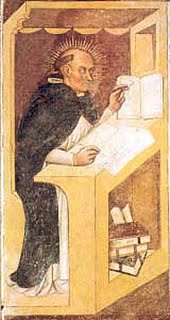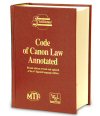An invitation to join me in reading the Decretals of Gregory IX (1234)
 Sometime in the year 1230, (St.) Raymond Penyafort began compiling the texts that would eventually comprise Pope Gregory IX's famous Quinque Libri Decretalium. Upon its promulgation in September of 1234 as the Church's first authentic collection of canon law (not yet a Code, but a binding collection nonetheless), the Liber Extra (as the QLD was also known) was the mechanism by which the canon law of the Catholic Church functioned for nearly 685 years, that is, until the Pio-Benedictine Code went into full effect in 1918.
Sometime in the year 1230, (St.) Raymond Penyafort began compiling the texts that would eventually comprise Pope Gregory IX's famous Quinque Libri Decretalium. Upon its promulgation in September of 1234 as the Church's first authentic collection of canon law (not yet a Code, but a binding collection nonetheless), the Liber Extra (as the QLD was also known) was the mechanism by which the canon law of the Catholic Church functioned for nearly 685 years, that is, until the Pio-Benedictine Code went into full effect in 1918.By any measure, that's a lot of Church history, legal and otherwise, and it's a pity so few ecclesiastical scholars know about the Liber Extra, let alone consult it anymore.
Well, I've decided to do something about that, and I invite a few brave folks to consider joining me: Over the next four years or so, I plan to read the Decretals of Gregory IX, straight through, wrapping up by September 5th, 2014.
The QLD consists of roughly 1,870 "chapters" (some of which are only a few lines long), grouped under 185 "titles", themselves arranged into 5 "books". These texts, as it happens, fill some 930 columns in the second volume of Freidberg's edition of the Corpus Iuris Canonici. Now, if one reads just one column per day, just Mondays thru Thursdays even, one can complete the QLD in a little over four years. I think that's an eminently do-able project. If you think so, too, and if you decide to join in this extended study project, drop me a note at Sacred Heart Major Seminary, and we'll stay in touch over the coming years. I think our time will be well rewarded.
I will post where I am in the reading here. If you can't find a hardcopy of the Liber Extra, it is available on-line, sans commentary, here.
Two points: Personally, I am inclined to skip the sometimes lengthy partes decisae, that is, source materials that were omitted by St. Raymond but included by Friedberg (see DDC VI: 1248). After all, these partes did not form part of Decretal law, and who am I to second-guess a saint and his boss the pope? On the other hand, many partes are quite short and can be easily accommodated in the course of one's regular reading. Second, I am undecided as to whether to read a gloss along with the Decretals. Bernard's Glossa Ordinaria can be read, if slowly, here, but most of the other commentators on Decretal law (such as Fagnanus or Reiffenstuel) are far too long to manage in the time allotted. So, I don't know yet. Maybe Gottofredo would work (allowing for its primitive fonts). We'll see.
My guess is that the last men likely to have read all of the Decretals would have been Wernz (d. 1914), Gasparri (d. 1934), and perhaps Dom Augustine (d. 1944). Let's pick up where they left off. It just requires some self-discipline and keeping up with the reading in small steps.Who knows what we'll find?
St. Raymond of Penyafort, patron of canonists, pray for us!
Ps: Be sure to ask our Lord for the indulgence attached to the study Christian doctrine (Enchiridion 1999, conc. 6; Enchiridion 1986, conc. 20; see also "Blessing of Students and Teachers" contained in the Book of Blessings, Chap. 5 and in the Shorter Book of Blessings, Chap. 4.) The partial indulgence applies to self-study projects within any recognized ecclesiastical discipline, and not just to catechetics. See 1983 CIC 827.2.
Update: The initial response to this idea is encouraging. I have set up on my CanonLaw.info website a project webpage ad lectionum usum, here.









<< Home